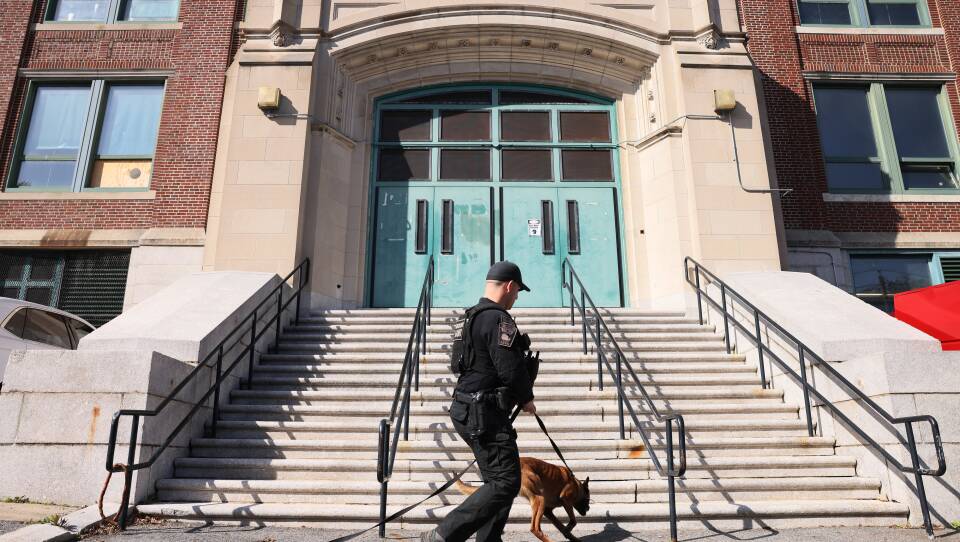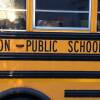Boston could close as many as half of its public schools in the coming years in response to declining enrollment, deteriorating infrastructure and inequitable student experiences, according to a new plan the city and school district released Wednesday.
As the oldest public school district in the country, Boston Public Schools has 119 buildings, which city and district leaders say is too many for current enrollment levels. Since 2006, enrollment has dropped 13% — from 56,000 students to fewer than 49,000 — resulting in under-enrolled schools that stretch BPS resources too thin.
The new plan envisions a district with fewer schools, but larger and newer ones that can offer students broader academic programming and help BPS operate more efficiently and equitably.
“Mergers and closures are difficult, and new construction and renovation projects take longer than any of us would like,” Boston Mayor Michelle Wu, BPS Superintendent Mary Skipper and School Committee Chair Jeri Robinson said in a joint statement accompanying the plan.
“We will work through these challenges and refuse to settle for anything less than delivering high-quality student experiences throughout the entire district,” they added.
More Education
BPS recently submitted the plan to the state Department of Elementary and Secondary Education as part of an agreement between the city and state to improve the district. The plan does not specify which schools will close or merge or which buildings will be renovated. It does, however, estimate a future range of schools at the elementary and secondary levels.
For example, the district currently has 87 buildings serving students in pre-K-6. The plan says that number could eventually decrease to roughly 40 to 80 buildings. For grades 7–12, there could eventually be fewer than 20 buildings, down from 31 right now.
Depending on how many mergers actually take place, student enrollment could range from at least 356 for smaller pre-K-6 institutions to a minimum of 1,620 for the largest 7-12th grade schools.
Jessica Tang, president of the Boston Teachers’ Union, says the union will advocate for “maximum transparency” about the steps to come in order to create “the fully resourced, fully staffed, and inclusive schools that all of our students deserve.”
“As a whole, we do agree that changes have to happen in order to execute the vision we share of high-quality schools for every student, regardless of ZIP code. Too many of our schools are in disrepair and opportunities are not equitably distributed,” Tang said in a statement.
“But individual educators, students and parents want to know how this is going to impact each specific school, and that unknown is absolutely causing a lot of justified anxiety,” she continued. “A blueprint and ambitious vision is just the first step.”
The framework came about after more than 20 listening sessions and over 9,000 survey responses in early 2023. The community engagement process revealed concerns about some under-enrolled schools lacking offerings like Advanced Placement courses and being unable to field teams in various sports, further eroding the student experience.
Many of these gaps, BPS says, stem from decades of historical racism that deprived some schools of investment and limited student opportunities, fueling a cycle of declining enrollment.
The new plan seeks to make the students’ educational experience more equitable with bigger schools that offer multiple core classes in each grade, feature high-quality athletics and specialty classrooms for art and music and include spaces to support special education.
“The district is focused on creating culturally affirming learning environments that will prepare current and future generations of students for enriching lives and fulfilling careers,” the plan states. “For many of our students, particularly students of color, we are still striving to meet the promise of equitable access to a boundary-expanding education.”
BPS plans to begin drawing up and vetting specific proposals in line with the plan throughout 2024.









